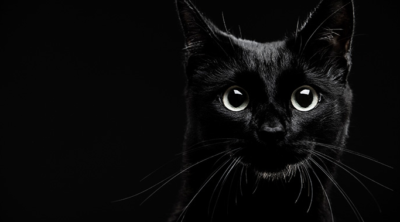
Feline leukemia treatment helps control the symptoms but the disease as such has no cure. The following article will cover information related to treatment and prevention of feline leukemia. This will help you save your pet’s life as well as prevent the spread of the disease to other felines.
Just as HIV is a deadly virus for humans, feline leukemia virus (FeLV) is the most dangerous of all viruses in cats. FeLV is also a retrovirus, just like the HIV. Thus, it can produce an enzyme called reverse transcriptase. This enzyme helps the virus insert its genetic material into the cells of the infected host. The genetic material for FeLV is RNA that is transcribed into DNA and then inserted into the DNA of the host cell.
This virus had been first discovered in 1960s that inhibited the cat’s immune system to a great extent. It soon became known as the most common disease in cats that resulted in high number of deaths in domesticated cats. FeLV does not always exhibit the symptoms as soon as it infects the cat. Thus, the owner is unaware of the infection in his pet cat and does not seek treatment right away.
How Does a Cat Get Infected with FeLV?
The feline leukemia virus is shed in body fluids of the cat. This includes the nasal secretions, saliva, urine, feces as well as blood. The virus spreads from an infected kitty to a healthy one by direct contact, mutual grooming and sharing the same litter box, food bowl and water bowl. It can also be passed on from the mother to the kitten in utero as well as during nursing. Thus, one should vaccinate their healthy cat over 3 months of age with FeLV vaccine.
What are the Symptoms of FeLV?
In most cases, cats do not exhibit any of the feline leukemia symptoms. The cat will show some acute infection symptoms when the number of viruses increase in the blood stream. These include –
- Loss of appetite
- Weight loss
- Poor coat
- Abscess
- Pale or inflamed gums
- Fever
- Upper respiratory tract infections
- Diarrhea
- Vomiting
- Seizures
- Jaundice
- Enlarged lymph nodes
- Chronic skin diseases
- Lethargy
- Vision problems
- Breathing trouble
How is FeLV Diagnosed?
If the veterinarian suspects FeLV, he may suggest some tests for diagnosis of the infection. The diagnostic test is also recommended for people who bring home a new cat. The most common way to diagnose this infection is by performing an Enzyme-Linked ImmunoSorbent Assay (ELISA) test. The ELISA test helps in detecting the antigen of FeLV in the blood. Other tests like indirect fluorescent antibody (IFA) test and polymerase chain reaction (PCR) help in confirming the positive results of ELISA.
What are the Treatment Options for Feline Leukemia?
Once the cat is diagnosed with FeLV, the veterinarian will check for anemia, kidney diseases, lymphosarcoma, etc. This is because the disease makes the cat prone to these infections and cancer. There is no specific treatment available for feline leukemia. This is because the treatment helps control the symptoms, but does not cure the disease. Just like HIV, medications and therapies prevent the disease from spreading, but does not get rid of the virus completely. The veterinarian may give antibiotics to the cat, if any signs of secondary bacterial infection are spotted. If the cat develops cancer or a tumor, it may be given chemotherapy or radiotherapy. Antiviral drugs, Lymphocyte T-Cell Immune Modulator therapy, etc. are advised as a part of FeLV treatment.
What is Feline Leukemia Holistic Treatment?
As far as medical treatment is concerned, there isn’t much a veterinarian can do. Feline leukemia holistic treatment will help improve the quality of life of the cat. You have to keep your cat indoors at all times to prevent any exposure to an infectious agent. The cat’s immune system is now compromised and it will not be able to resist attack from infectious agents. Also, it will prevent your cat from spreading the virus to other healthy cats in the neighborhood. You will have to spray or neuter your cat immediately. This will curb its outdoor nature to some extent and prevent pregnancies.
Thus, the kittens will not be born infected with the virus. You will have to feed your cat a nutritionally balanced diet and avoid feeding it uncooked meats and eggs. Unpasteurized dairy products should be avoided as it increases the risk of food borne parasitic and bacterial infections. Take your cat for regular visits to the veterinarian. The veterinarian will perform a physical examination of the cat that includes eyes, ears, gums, skin, lymph nodes, etc. Urine, blood and biochemical tests too will be performed regularly. Close monitoring of the cat’s health and any changes reported to the veterinarian, will avoid any cat health complications.
An infected cat’s life is no more than a few months to 3 years. The treatment cost for feline leukemia may prove to be expensive as you will have to give the cat regular medications as well as take it for visits to the veterinarian. If the cat is severely ill or suffering from last stage cancer, the veterinarian may suggest euthanasia. This will help the cat to die in peace, rather than suffer in pain. One should make sure they give their pets feline leukemia vaccine to prevent this life-threatening infection. This was all about feline leukemia treatment and prevention. For more details on feline leukemia, speak to an animal expert as it is important to prevent this disease.


